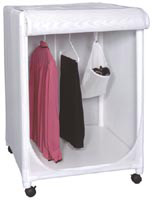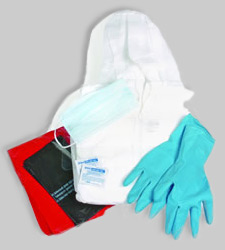Home | Glossary | Resources | Help | Contact Us | Course Map
Archival Notice
This is an archive page that is no longer being updated. It may contain outdated information and links may no longer function as originally intended.
Biological Evidence
Biological evidence consists of body fluids or other bodily tissues, the examination of which may identify the donor.
Examples:
- Blood
- Semen
- Saliva
- Bone
- Hair
- Skin
Integrity
The power of DNA testing is such that examination of biological items can produce very compelling evidence. However, attention must be paid to degradation, contamination, and safety issues.
Although DNA is chemically robust, it can be degraded by environmental factors such as moisture and sunlight. It is recommended that biological evidence be air dried as soon as possible and is always kept in paper packaging. The techniques used to develop DNA profiles are extremely sensitive. It is important to wear protective clothing (e.g., gloves and face masks) during collection and handling to prevent contamination from other biological factors, such as sweat and saliva.
Safety
Blood can contain pathogens such as the Hepatitis B virus, Hepatitis C virus, and the human immunodeficiency virus (HIV). It is essential to regard all biological evidence as potentially infectious and to follow universal safety precautions.
These precautions include the following:
- Wear personal protective equipment (PPE), such as gloves and face masks.
- Avoid eating, applying cosmetics, or any hand-to-face contact (especially mouth and eye).
- Use implements and wear puncture resistant gloves to handle objects that may have been used for intravenous administration of drugs place these in sharps disposal containers.
- Identify biohazardous evidence material and package in containers with appropriate labeling.
Additional Online Courses
- What Every First Responding Officer Should Know About DNA Evidence
- Collecting DNA Evidence at Property Crime Scenes
- DNA – A Prosecutor’s Practice Notebook
- Crime Scene and DNA Basics
- Laboratory Safety Programs
- DNA Amplification
- Population Genetics and Statistics
- Non-STR DNA Markers: SNPs, Y-STRs, LCN and mtDNA
- Firearms Examiner Training
- Forensic DNA Education for Law Enforcement Decisionmakers
- What Every Investigator and Evidence Technician Should Know About DNA Evidence
- Principles of Forensic DNA for Officers of the Court
- Law 101: Legal Guide for the Forensic Expert
- Laboratory Orientation and Testing of Body Fluids and Tissues
- DNA Extraction and Quantitation
- STR Data Analysis and Interpretation
- Communication Skills, Report Writing, and Courtroom Testimony
- Español for Law Enforcement
- Amplified DNA Product Separation for Forensic Analysts



